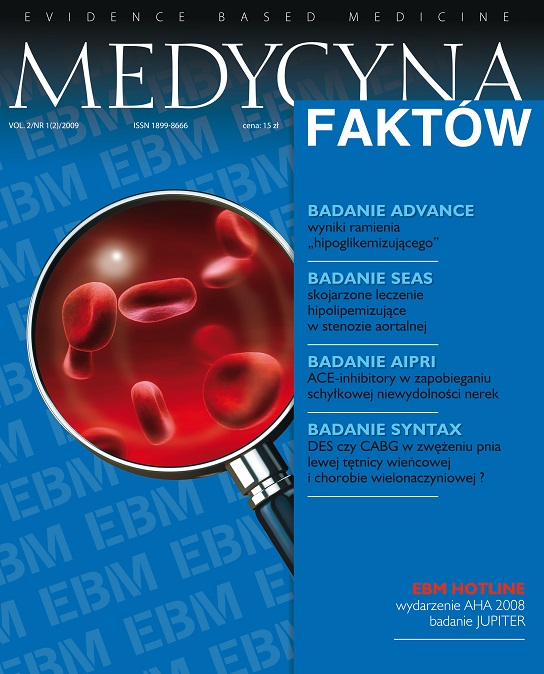Combine lipid lowering therapy in aortic stenosis is unsuccessful. But is it safe? – results for SEAS Review article
Main Article Content
Abstract
Hyperlipidemia has been suggested as a risk factor for stenosis of the aortic valve, but lipid-lowering studies have had conflicting results. In SEAS trial (Simvastatin and Ezetimibe in Aortic Stenosis) the cholesterol-lowering combination (simvastatin/ezetimibe – Vytorin) was no better than placebo in reducing the primary composite end point of aortic-valve and cardiovascular events in patients with mild to moderate asymptomatic aortic stenosis. The combination was significantly more effective than placebo in reducing the risk of ischemic events, a secondary composite end point that was driven primarily by reductions in coronary artery bypass graft (CABG) surgery. There were significantly more cases of cancer among combination therapy group compared with placebo group. But the available results from two ongoing ezetimibe/simvastatin trials do not provide credible evidence of any adverse effect of ezetimibe on rates of cancer.
Article Details
Copyright © by Medical Education. All rights reserved.
References
2. Cholesterol Treatment Trialists’ (CTT) Collaborators: Efficacy and safety of cholesterol-lowering treatment: prospective meta-analysis of data from 90,056 participants in 14 randomised trials of statins. Lancet 2005, 366: 1267-78.
3. Peto R., Emberson J., Landray M. et al.: Analyses of Cancer Data from Three Ezetimibe Trials. N. Eng. J. Med. 2008, 359: 1357-1366.

